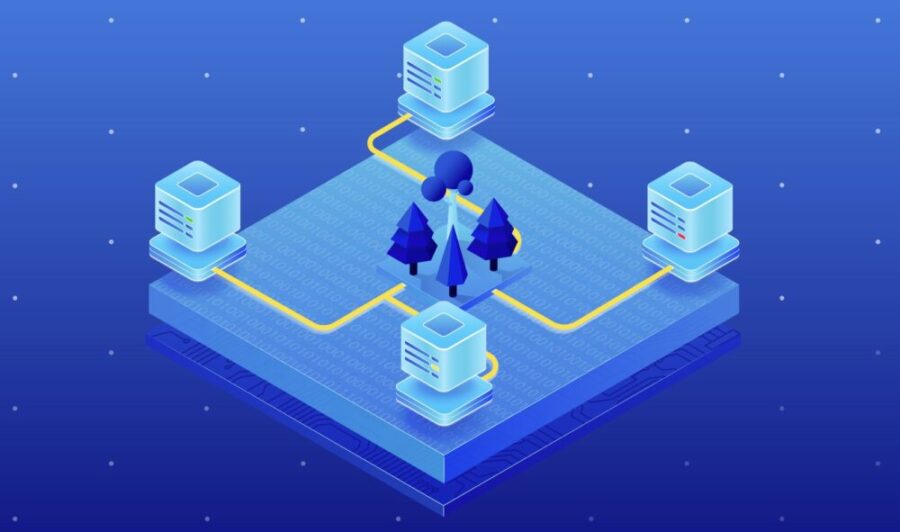Consequences and Benefits of Gen-AI on Climate and Where We’re Headed
October 7, 2025

Noman Bashir's work explores both the potential benefits and lasting environmental consequences of Gen-AI.
MCSC Impact Fellow Noman Bashir, who leads the MCSC’s work on Data & Computing, has been exploring effective decarbonization strategies in this space, with an emphasis on generative artificial intelligence (Gen-AI) – a large-scale technology-induced shift that is rapidly expanding. Noman’s research on sustainable computing investigates both the potential benefits and lasting environmental consequences of Gen-AI. We spoke with him about his current research and his predictions about the future of Gen-AI.
What are the impacts of Gen-AI on climate?
The impacts of Gen-AI on climate are wide-ranging.
They span from the materials and resource usage required to make these AI chips to the energy used in manufacturing those chips, as well as during the use phase in data centers. That energy also comes with corresponding greenhouse gas (GHG) emissions and carbon footprint because most of the new energy demand from AI is being met by fossil fuel-powered generators in the electric grid.
In addition to resource/material use (energy and carbon), another impact is water usage. The water is used during the manufacturing of the chips, for electricity production, and finally, to cool the chips when they are being used inside a data center. As more and more data centers are being deployed in regions that are already water-scarce, such as Arizona and California, that problem is going to get worse.

"As more and more data centers are being deployed in regions that are already water-scarce, such as Arizona and California, that problem is going to get worse."
Another impact that has received much less attention is the impact on surrounding communities and biodiversity. We have a paper from earlier this year that outlines how surrounding communities are being impacted. Those impacts range from noise pollution that is coming out of data centers to not having enough amenities in the area because data centers don’t employ a lot of people. Additionally, because data centers need a lot of electric grid infrastructure, the electricity rates for the normal consumers are going up to support those infrastructure updates. So even though these last few impacts are not climate or environmental impacts, I think they are very important and must be highlighted when we talk about the more conventional type of environmental impacts, including resource usage, energy, carbon, and water.
What are some ways in which Gen-AI can help us tackle climate and sustainability challenges?
One clear example is better weather forecasting and climate modeling. Due to climate change, the weather is becoming increasingly unpredictable and severe in many cases. There has been considerable work on utilizing AI and large language models to more accurately predict these events, which can aid in preparing for them. There are other use cases in the management of electric grids and the better integration of renewable energy into the grid. However, one thing I would point out is that many of those applications are for traditional AI, rather than Gen-AI.
So, how applicable would Gen-AI be to solving climate-related problems? That is an open question at the moment. While there are realized benefits of AI, broadly speaking, Gen-AI’s benefits are more hypothetical, and we need to wait and see how it ultimately turns out.
"While there are realized benefits of AI, broadly speaking, Gen-AI's benefits are more hypothetical, and we need to wait and see how it ultimately turns out."
Based on your research and work, how prepared are we for the future growth of AI?
In my view, we are not adequately prepared for the rapid expansion of AI. Several factors challenge our ability to ensure its responsible development and use.
First, the pace at which truly sustainable data centers can be developed is far slower than the pace at which AI infrastructure is currently being built. While there is no universally accepted definition of a “sustainable data center,” the term generally refers to facilities that use hardware manufactured with minimal environmental impact and operate with high energy efficiency powered by clean, renewable sources.
Right now, the urgency to expand AI capacity is outstripping our ability to do so responsibly. The rapid growth of data centers is driving reliance on natural gas and even prompting the reactivation of fossil-fueled power plants. If development proceeded more gradually, we could align new capacity with renewable energy generation and better manage the environmental footprint.
Moreover, most AI capabilities today come at a steep environmental cost: AI-focused data centers consume roughly ten times more power than conventional ones. Because renewable energy integration remains constrained by intermittency and grid limitations, many of these centers are currently powered by gas-based generators.
If we extended the development timeline, building these data centers over a longer time period rather than in just two or three years, we could do so in a more sustainable and balanced way. As it stands, however, the current pace of AI-driven infrastructure growth far exceeds our preparedness to support it responsibly.
What are some of the big questions we should be asking about the relationship between Gen-AI and climate?
Detailed and comprehensive measurements can help direct the growth of Gen-AI to be more positive when it comes to climate. We should be asking more about the impact of Gen-AI on our climate, despite the lack of transparency in this space.
Recently, numerous companies have released reports detailing the environmental impact of their AI models, a step in the right direction. However, many details remain unclear. For example, how many data centers are being built, and where are they getting their power from? These details are still being estimated on sparse data, and there is no full visibility into their environmental impact.
There are also questions to be asked around incentives. What are the incentives for a company to reduce the environmental impact of AI? For example, if we contrast a low-carbon-intensity data center in Quebec versus a more carbon-intensive data center in Poland or Tennessee, what are the incentives to shift workloads from dirty locations to cleaner locations or do things in a way that saves the environment? How can we develop the right set of incentives for AI stakeholders to make efforts toward making computing and AI more sustainable?
